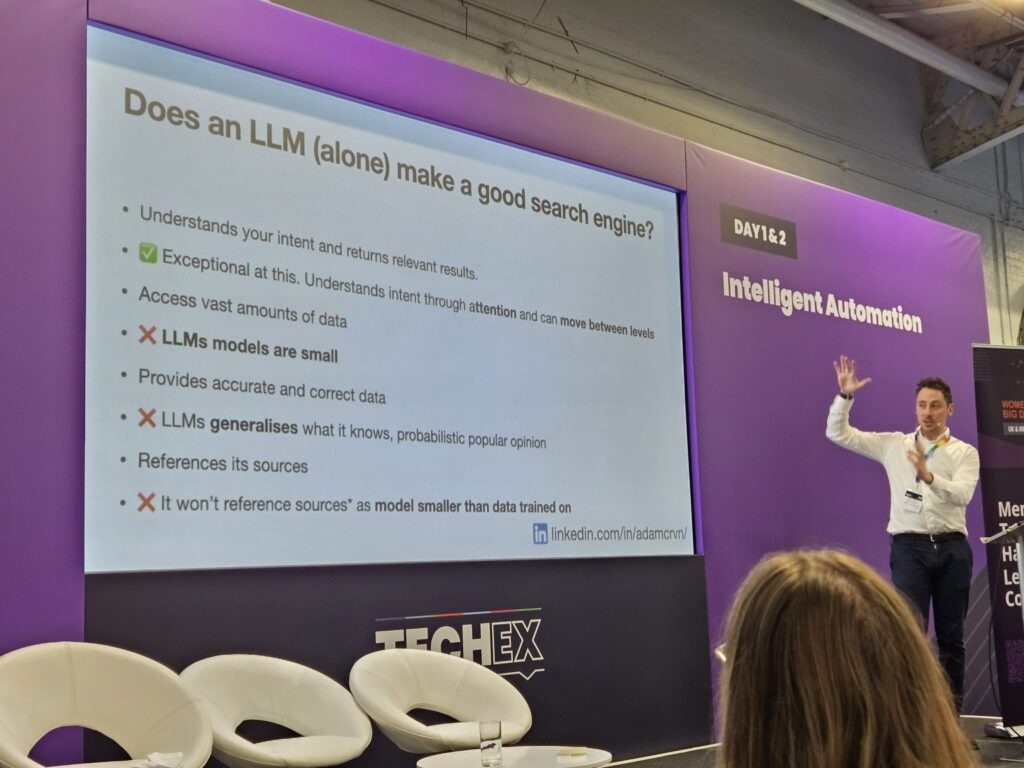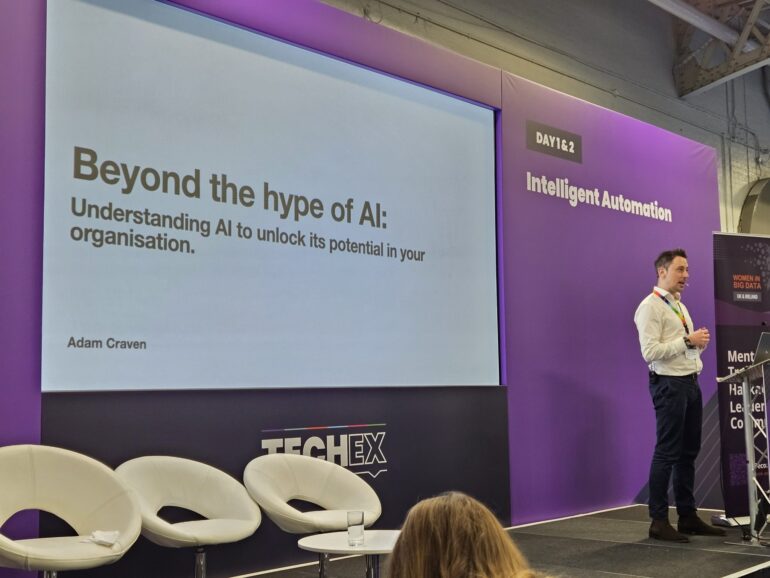TL;DR:
- Adam Craven’s presentation at AI & Big Data Expo emphasized practical AI applications.
- Craven urged understanding AI components like neural networks, embeddings, and transformers.
- Large language models (LLMs) excel in summarization and translation but have limitations as search engines.
- Caution against relying solely on LLMs for complex tasks.
- Craven advised organizations to set realistic AI expectations aligned with their values.
- Actionable insights for implementation include data capture, specific test cases, and a systematic strategy.
Main AI News:
In a recent presentation at the AI & Big Data Expo Global, Adam Craven, Director at Y-Align, delivered a compelling discourse on the pragmatic applications of artificial intelligence (AI) and the often-overlooked pitfalls that accompany the industry’s excessive hype.
Drawing from his extensive background in engineering and leadership roles at prestigious institutions such as McKinsey & Company, HSBC, and Nokia, Craven shared his insights as a trusted consultant, assisting C-level executives in navigating the intricate landscape of AI integration. The core message of his presentation revolved around the imperative need to comprehend AI beyond sensationalism and make well-informed decisions that align with an organization’s overarching objectives.
Deciphering the AI Frenzy
Craven introduced a systematic methodology for demystifying AI, emphasizing the importance of breaking down the overarching concept into more manageable components. He meticulously outlined the fundamental attributes of neural networks, embeddings, and transformers, underscoring the significance of large language models (LLMs) as a shared foundation.
• Neural networks, described as probabilistic and adaptable systems, serve as the bedrock of AI, closely mirroring human learning processes.
• Embeddings enable computers to navigate various levels of abstraction, akin to human cognition.
• Transformers, incorporating the “attention” mechanism, stand as the linchpin of the AI revolution, empowering machines to grasp context and meaning.
LLMs: Navigating the Landscape
Craven delved into the capabilities of LLMs and their suitability as search engines. While excelling in understanding search intent, these models lack access to extensive datasets, may not consistently deliver accurate results, and often fall short when referencing sources—attributes pivotal to effective search engines.
Nonetheless, Craven underscored the prowess of large language models as potent summarization engines for research purposes. He highlighted their capacity to condense data, facilitate language translation, and function as invaluable research assistants. However, he cautioned against relying exclusively on LLMs for intricate tasks, providing evidence from a study where consultants utilizing language models demonstrated subpar performance in nuanced analyses.
Demystifying AI: Establishing Realistic Expectations
The presentation culminated with practical applications of AI for organizations, including documentation tools, high-level decision-making, code review utilities, and multimodal decision-support systems. Craven advocated for a judicious assessment of when LLMs prove beneficial, ensuring their alignment with an organization’s core values and principles.
Craven also issued a word of caution against inflated claims regarding AI’s performance, citing instances where language models excelled in certain domains but fell short in others. He urged the audience to consider the broader context and nuances when assessing the impact of AI, avoiding unfounded expectations.
Practical Insights for Implementation
Concluding his presentation, Craven offered actionable insights for implementation. He encouraged organizations to capture data for future use, develop specific test cases for distinct use scenarios, and apply a systematic framework to formulate a robust AI strategy. Throughout, the emphasis remained steadfast on seeing through the hype and strategically integrating AI into existing workflows, potentially saving millions in the process.
In a world saturated with AI promises, Adam Craven’s pragmatic approach provides organizations with a well-defined roadmap to harness the transformative potential of AI while evading the common pitfalls that often accompany the technology’s extravagant claims.

Source: AI News
Conclusion:
Adam Craven’s presentation underscores the need for businesses to approach AI with a realistic perspective, understanding its components and limitations. Organizations should carefully evaluate AI’s role in their operations, setting expectations that align with their values and principles. Implementing AI strategically, while acknowledging its strengths and weaknesses, can lead to substantial benefits in the market.

